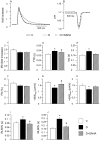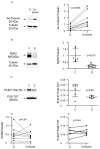The Histone Deacetylase Inhibitor Suberoylanilide Hydroxamic Acid (SAHA) Restores Cardiomyocyte Contractility in a Rat Model of Early Diabetes
- PMID: 31014028
- PMCID: PMC6514644
- DOI: 10.3390/ijms20081873
The Histone Deacetylase Inhibitor Suberoylanilide Hydroxamic Acid (SAHA) Restores Cardiomyocyte Contractility in a Rat Model of Early Diabetes
Abstract
In early diabetes, hyperglycemia and the associated metabolic dysregulation promote early changes in the functional properties of cardiomyocytes, progressively leading to the appearance of the diabetic cardiomyopathy phenotype. Recently, the interplay between histone acetyltransferases (HAT) and histone deacetylases (HDAC) has emerged as a crucial factor in the development of cardiac disorders. The present study evaluates whether HDAC inhibition can prevent the development of cardiomyocyte contractile dysfunction induced by a short period of hyperglycemia, with focus on the potential underlying mechanisms. Cell contractility and calcium dynamics were measured in unloaded ventricular myocytes isolated from the heart of control and diabetic rats. Cardiomyocytes were either untreated or exposed to the pan-HDAC inhibitor suberoylanilide hydroxamic acid (SAHA) for 90 min. Then, a fraction of each group of cells was used to evaluate the expression levels of proteins involved in the excitation-contraction coupling, and the cardiomyocyte metabolic activity, ATP content, and reactive oxygen species levels. SAHA treatment was able to counteract the initial functional derangement in cardiomyocytes by reducing cell oxidative damage. These findings suggest that early HDAC inhibition could be a promising adjuvant approach for preventing diabetes-induced cardiomyocyte oxidative damage, which triggers the pro-inflammatory signal cascade, mitochondrial damage, and ventricular dysfunction.
Keywords: HDAC inhibition; calcium transients; cardiomyocyte mechanics; cell oxidative stress; diabetes.
Conflict of interest statement
The authors declare no conflict of interest. The funders had no role in the design of the study; in the collection, analyses, or interpretation of data; in the writing of the manuscript, or in the decision to publish the results.
Figures




Similar articles
-
Histone Deacetylase Inhibitor Suberoylanilide Hydroxamic Acid Improves Energetic Status and Cardiomyogenic Differentiation of Human Dilated Myocardium-Derived Primary Mesenchymal Cells.Int J Mol Sci. 2020 Jul 8;21(14):4845. doi: 10.3390/ijms21144845. Int J Mol Sci. 2020. PMID: 32650632 Free PMC article.
-
HDAC inhibition induces autophagy and mitochondrial biogenesis to maintain mitochondrial homeostasis during cardiac ischemia/reperfusion injury.J Mol Cell Cardiol. 2019 May;130:36-48. doi: 10.1016/j.yjmcc.2019.03.008. Epub 2019 Mar 14. J Mol Cell Cardiol. 2019. PMID: 30880250 Free PMC article.
-
Histone deacetylase inhibition blunts ischemia/reperfusion injury by inducing cardiomyocyte autophagy.Circulation. 2014 Mar 11;129(10):1139-51. doi: 10.1161/CIRCULATIONAHA.113.002416. Epub 2014 Jan 6. Circulation. 2014. PMID: 24396039 Free PMC article.
-
[Epigenetic mechanisms and alcohol use disorders: a potential therapeutic target].Biol Aujourdhui. 2017;211(1):83-91. doi: 10.1051/jbio/2017014. Epub 2017 Jul 6. Biol Aujourdhui. 2017. PMID: 28682229 Review. French.
-
Suberoylanilide Hydroxamic Acid Analogs with Heteroaryl Amide Group and Different Chain Length: Synthesis and Effect on Histone Deacetylase.Molecules. 2024 Jan 1;29(1):238. doi: 10.3390/molecules29010238. Molecules. 2024. PMID: 38202821 Free PMC article. Review.
Cited by
-
Role of histone deacetylase inhibitors in diabetic cardiomyopathy in experimental models (Review).Med Int (Lond). 2022 Aug 2;2(4):26. doi: 10.3892/mi.2022.51. eCollection 2022 Jul-Aug. Med Int (Lond). 2022. PMID: 36699507 Free PMC article. Review.
-
The Emerging Role of HDACs: Pathology and Therapeutic Targets in Diabetes Mellitus.Cells. 2021 May 28;10(6):1340. doi: 10.3390/cells10061340. Cells. 2021. PMID: 34071497 Free PMC article. Review.
-
Post-translational modifications orchestrate mTOR-driven cell death in cardiovascular disease.Front Cardiovasc Med. 2025 Jul 15;12:1620669. doi: 10.3389/fcvm.2025.1620669. eCollection 2025. Front Cardiovasc Med. 2025. PMID: 40734978 Free PMC article. Review.
-
Improved HDAC Inhibition, Stronger Cytotoxic Effect and Higher Selectivity against Leukemias and Lymphomas of Novel, Tricyclic Vorinostat Analogues.Pharmaceuticals (Basel). 2021 Aug 26;14(9):851. doi: 10.3390/ph14090851. Pharmaceuticals (Basel). 2021. PMID: 34577551 Free PMC article.
-
Regulatory Roles of Histone Deacetylation in Metabolic Stress-Induced Expression of Caspase Recruitment Domain-Containing Protein 9 (CARD9) in Pancreatic β-Cells.Int J Mol Sci. 2023 Nov 6;24(21):15994. doi: 10.3390/ijms242115994. Int J Mol Sci. 2023. PMID: 37958977 Free PMC article.
References
-
- Zhang L., Du J., Yano N., Wang H., Zhao Y.T., Dubielecka-Szczerba P., Zhuang S., Chin E.Y., Qin G., Zhao T.C. Sodium butyrate protects against high fat diet-induced cardiac dysfunction and metabolic disorders in type II diabetic mice. J. Cell Biochem. 2017;118:2395–2408. doi: 10.1002/jcb.25902. - DOI - PMC - PubMed
-
- Savi M., Bocchi L., Sala R., Frati C., Lagrasta C., Madeddu D., Falco A., Pollino S., Bresciani L., Miragoli M., et al. Parenchymal and Stromal Cells Contribute to Pro-Inflammatory Myocardial Environment at Early Stages of Diabetes: Protective Role of Resveratrol. Nutrients. 2016;8:729. doi: 10.3390/nu8110729. - DOI - PMC - PubMed
MeSH terms
Substances
LinkOut - more resources
Full Text Sources

